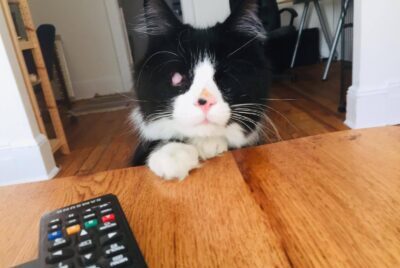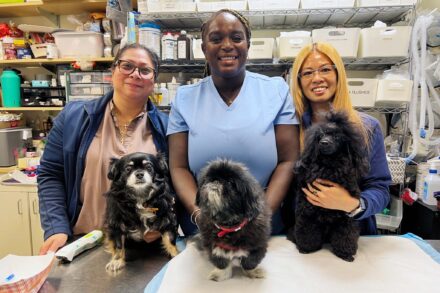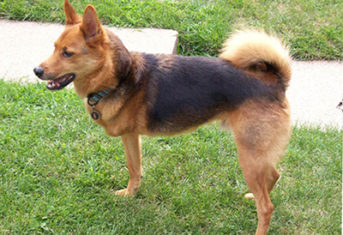How to Care for a Blind Dog or Cat

How to Care for a Blind Dog or Cat
Certain medical conditions upset pet families more than others, an amputation of the tail or a limb, for example. Another is loss of vision in their pet. Pets lose vision for many of the same reasons people do, including glaucoma, cataracts and degeneration of the retina. In small breed dogs with bulging eyes, the eye can even dislodge from the socket following a seemingly minor traumatic event, and many orphan kittens lose vision from serious viral infections that damage the eyes. This blogpost focuses on steps you can take to help your pet cope successfully with vision loss.
Create a Safe Environment for Your Visually Impaired Pet
Visually impaired pets should not be left outdoors unattended as they may wander into trouble. They are safest indoors, but there are still some potential indoor hazards. First are the stairs. If your pet has gradually lost their vision, they are likely to know where the stairs are and how to navigate them. If vision loss is sudden, put a gate in front of the stairs until they learn their way around. Redecorating and rearranging the furniture can also prove challenging to the visually impaired pet. If you get new sofa, be sure to monitor your pet until she becomes accustomed to the placement in the room.
Devices to Protect your Blind Dog
I had a patient who, in addition to cancer, was blind because of chronic retinal degeneration. He came to see me one day wearing a special vest supporting a device that looked like half a hula hoop, called a blind dog halo. The hula hoop served as a bumper to protect the dog’s head as he walked around. Another protective device for blind dogs is BlindSight, an echolocation device suspended from a collar. A recent study in the Journal of Small Animal Practice studied the impact of these two devices on the ability of blind dogs to navigate a maze. Both devices improved the dog’s navigational skills, but pet families were less enthusiastic about the devices than the researchers were, perhaps due to the intrusiveness of the devices.
A low-tech but effective device is a leash and harness that indicates your dog is blind and alerts passersby to your dog’s condition.
Enrichment for Blind Pets
Since your dog can no longer see the hand signals you use for sit, stay and come, consider retraining him to audible commands with a clicker. If your blind dog is well socialized, consider volunteering him for animal assisted therapy. For both children and adults with visual impairments, engaging with a similarly handicapped animal can be inspiring. Finally, don’t forget that your dog or cat’s nose still works very well. Feeding toys, like the snuffle mat, will mentally challenge your pet to forage for dinner.
If your pet is having vision problems, be sure to seek the opinion of a veterinary ophthalmology specialist as some visual conditions are treatable.
But don’t despair if vision cannot be restored – suggestions like these can give your pet a good quality of life even without sight.

































